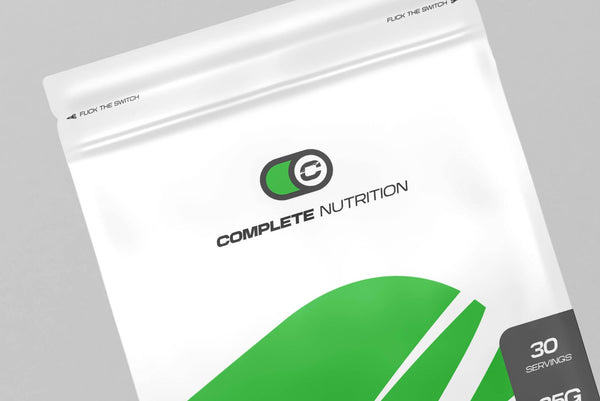Fish fingers are a nostalgic favourite in many UK homes. They are quick, convenient, and comforting, often bringing back memories of childhood dinners. While they may be best known as a freezer staple or easy meal for kids, many adults now enjoy them as a quick source of protein. But how much protein does a fish finger actually provide, and can they fit into a balanced, nutritious diet?
Fish fingers are made primarily from white fish, usually cod, pollock, or haddock, coated in breadcrumbs and lightly fried or oven baked. Since the core ingredient is fish, which is naturally rich in protein, fish fingers can contribute meaningfully to your daily protein intake, provided you choose quality options and cook them in a healthy way.
Understanding how much protein is in a fish finger, how it compares to other protein sources, and how it fits into your overall nutrition can help you make more informed food choices while still enjoying a classic British favourite.
How Much Protein Is in a Fish Finger
A standard frozen fish finger weighing around 30 grams contains about 3 to 4 grams of protein. This means that a serving of four fish fingers provides roughly 12 to 16 grams of protein, depending on the brand, the type of fish used, and whether it is fried or oven baked.
If you look at it by weight, 100 grams of cooked fish fingers provides around 11 to 13 grams of protein. While this is less than an equivalent portion of pure fish fillet, which can offer up to 20 grams of protein per 100 grams, fish fingers still contribute a respectable amount of protein to your diet, especially when paired with other nutritious foods.
The protein in fish fingers is derived from the fish itself, not from the coating, so the higher the fish content of the product, the more protein you will get per serving. Premium brands and those labelled “100% fish fillet” usually contain more protein than budget versions that use minced fish or fillers.
What Kind of Protein Do Fish Fingers Provide
The protein found in fish fingers is complete protein, which means it contains all nine essential amino acids your body needs to build and repair tissues. These amino acids play a crucial role in maintaining muscle mass, supporting your immune system, and aiding in enzyme and hormone production.
Fish, including the types used in fish fingers, is known for its high-quality, easily digestible protein. Even though the breadcrumb coating adds carbohydrates and some fat, the underlying protein remains valuable.
Cod and pollock, two common fish finger ingredients, both offer lean protein with minimal fat, while haddock provides a similar nutritional profile with a slightly richer flavour.
Fish Fingers vs Plain Fish Fillet: Protein Comparison
A plain grilled or baked cod fillet provides roughly 20 grams of protein per 100 grams. In comparison, the same weight of fish fingers provides around 12 to 13 grams. The difference comes from the added breadcrumbs and moisture content, which reduce the protein concentration slightly.
However, if you eat several fish fingers as part of a meal, you can still reach a substantial protein intake. For example, six fish fingers provide around 18 grams of protein, which is comparable to one small fillet of white fish.
While the coating adds calories and carbohydrates, it can also make fish fingers more filling and satisfying, especially when paired with vegetables or a side salad.
The Nutritional Profile of Fish Fingers
In addition to protein, fish fingers contain a mix of nutrients, depending on how they are made. A standard serving of four oven-baked fish fingers provides approximately:
• 12 to 16 grams of protein
• 8 to 10 grams of fat
• 20 to 25 grams of carbohydrates
• 220 to 250 calories
They also contain small amounts of vitamins and minerals naturally present in fish, such as vitamin B12, phosphorus, iodine, and selenium. These nutrients play an essential role in energy metabolism, thyroid function, and maintaining healthy blood cells.
Some fish fingers are fortified with omega-3 fatty acids, especially those made from oily fish like salmon. These varieties provide additional heart health benefits and anti-inflammatory properties.
How Cooking Method Affects Protein Content
The cooking method has a modest effect on the protein content of fish fingers but a significant impact on calorie and fat levels. Oven baking or air frying retains most of the protein while reducing added fat compared to deep frying.
When fish fingers are fried in oil, they absorb some of the fat, which can increase the calorie count by 50 to 100 calories per serving without improving the protein value. Baking or air frying helps maintain the crisp texture while keeping the meal lighter and healthier.
Cooking does not destroy protein, though high heat can slightly reduce moisture, concentrating the nutrients per bite. For best results, avoid overcooking, as this can make the fish dry and reduce palatability.
Fish Fingers for Children and Adults
Fish fingers are a good way to introduce protein-rich foods to children, especially those who are fussy eaters. The mild flavour and crunchy coating make them appealing while still providing valuable nutrients.
For adults, fish fingers can be a convenient and affordable way to add protein to quick meals. When served with vegetables or wholegrain sides, they can fit well into a balanced diet.
They also work well as part of post-workout meals, as the protein helps support muscle repair, while the carbohydrates in the coating can assist with glycogen replenishment.
Health Benefits of Protein in Fish Fingers
The protein in fish fingers offers several health benefits. It supports muscle maintenance and growth, promotes fullness, and assists in tissue repair. Protein also helps stabilise blood sugar levels and can reduce hunger, making it easier to manage portion control and maintain a healthy weight.
Fish protein, in particular, is known for being light and easily digestible. It is often recommended for people recovering from illness or those who find red meat heavy on the digestive system.
The omega-3 fatty acids present in certain types of fish also support heart and brain health. While not all fish fingers contain significant omega-3 levels, choosing varieties made from oily fish like salmon or mackerel can increase this benefit.
Choosing Healthier Fish Fingers
The nutritional value of fish fingers depends heavily on the quality of the product. To get the most protein and the least unnecessary additives, look for fish fingers with at least 60 to 65 percent fish content and minimal fillers or starches. Labels that say “made from 100% fillet” indicate a higher-quality option.
Some supermarket own-brand versions use minced fish or fish paste, which can slightly lower protein content while increasing carbohydrates. These are fine for occasional meals but may not provide the same nutrient density as premium brands.
For an even healthier option, you can make homemade fish fingers using fresh cod or haddock coated in wholemeal breadcrumbs and baked in the oven. This approach maximises protein while keeping the ingredients simple and fresh.
How Fish Fingers Compare to Other Protein Sources
Fish fingers provide a moderate amount of protein, but they should not be your only source. Compared to lean meats and plant-based proteins, they fall somewhere in the middle in terms of protein density.
For example:
• 100 grams of grilled chicken breast contains about 31 grams of protein.
• 100 grams of tofu contains around 8 grams.
• 100 grams of cooked lentils provides about 9 grams.
• 100 grams of baked fish fingers offers about 12 grams.
While fish fingers may not match pure fish or lean meats for protein concentration, they can still play a valuable role in achieving your daily intake, especially when combined with other protein sources throughout the day.
How Much Protein Do You Need Daily
In the UK, the average adult needs around 0.75 grams of protein per kilogram of body weight daily. For a person weighing 70 kilograms, that equals roughly 52 grams of protein per day.
If you are active or trying to build muscle, your protein needs may rise to between 1.2 and 1.6 grams per kilogram, which for the same person is around 84 to 112 grams per day.
Eating four to six fish fingers provides about 18 grams of protein, which makes a decent contribution toward that target when paired with other foods like eggs, beans, or dairy.
Want to learn more about protein and how to meet your goals
Visit our [Protein Powder Guidance Hub] to explore how protein supports your health, how to use supplements alongside whole foods like fish, and how to choose the right protein powder for your lifestyle.
Fish Fingers and Weight Management
Fish fingers can be part of a balanced diet for weight control if eaten in moderation. The protein content helps with satiety, reducing the temptation to snack between meals. Choosing oven-baked rather than fried versions keeps calories lower without sacrificing flavour.
Pairing fish fingers with high-fibre sides such as peas, broccoli, or wholegrain rice makes the meal more filling and nutrient-dense. Avoiding high-fat sauces or sugary condiments like sweet chilli or mayonnaise also helps keep the dish healthy.
Are Fish Fingers Good for You
Despite their reputation as a processed food, fish fingers can be a healthy choice when selected and cooked wisely. They are rich in protein, contain beneficial nutrients from fish, and can be a convenient way to include seafood in your diet.
However, it is worth keeping an eye on sodium content, as many brands add salt for flavour. High sodium intake can contribute to elevated blood pressure, so if you eat fish fingers regularly, choose reduced-salt options where available.
Homemade or premium versions tend to be lower in salt and preservatives, making them better for long-term health.
Fish Fingers and Sustainable Eating
Sustainability is another consideration when choosing fish products. Many fish finger brands now carry certification from the Marine Stewardship Council (MSC), ensuring that the fish is sourced responsibly from well-managed fisheries. Choosing MSC-labelled products supports ocean conservation and helps maintain healthy fish populations.
Sustainable choices not only benefit the environment but also tend to indicate higher-quality fish, which means better nutrition for you.
Conclusion
A typical fish finger provides about 3 to 4 grams of protein, meaning a serving of four offers 12 to 16 grams. While this is less than a plain fish fillet, it still makes a valuable contribution to your daily protein needs.
Fish fingers are a source of complete, high-quality protein, along with beneficial nutrients such as vitamin B12, selenium, and iodine. When baked rather than fried and paired with balanced sides, they can fit comfortably into a healthy diet for both children and adults.
If you are looking to increase your protein intake, especially for fitness or recovery goals, consider pairing your meals with a high-quality Protein Powder. It complements everyday foods like fish fingers and helps you reach your protein targets efficiently while maintaining balance and variety in your diet.




Share:
Protein for Endurance Athletes vs Strength Athletes
How Much Protein in Sirloin